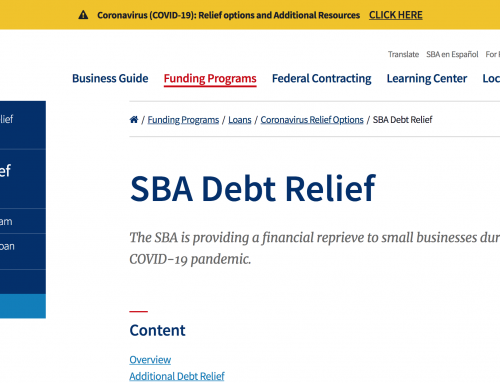Podcast: Play in new window | Download
Subscribe: Apple Podcasts | RSS
Debt and Solvency Ratios
Audio
Debt and Solvency Ratios
Topics
Introduction
Debt Ratio
Debt to Equity Ratio
Equity Ratio
Capitalization Ratio
Cash Flow to Debt
Introduction
Solvency is the ability of a company to meet its long-term financial obligations. This ratio group is concerned with identifying absolute and relative levels of debt, financial leverage, and capital structure.
These ratios allow users to gauge the degree of inherent financial risk, as well as the potential of insolvency. Financial risk is a relative measure; the absolute amount of debt used to finance assets and operations is by itself not that meaningful. In other words, there is no right or wrong amount of debt. The company may be evaluating in context of ability to carry or service liabilities.
Debt Ratio
The debt ratio is the most basic indicator of solvency which identifies the percentage of assets that are funded by liabilities. There is no set rule for the result but one could expect to see a rough range of results between 60%-80% across a broad spectrum of most industries. Financial institutions conversely are highly leveraged and ratios with results of 90%+ are common. Ratios below 50% are infrequent, with the possible exception of small family owned businesses.
This ratio by itself is not especially important. It tells the level of debt or leverage, but the result needs to be considered in relation to the enterprise as a whole. High leverage can be positive if the company is able to support and take advantage of it. This ratio is therefore a starting point to solvency analysis. Analysts will quickly move on from this point by focusing attention to the composition of liabilities, earnings, cash flow, and coverage.
Debt to Equity Ratio
The debt to equity ratio provides a different perspective on the manner in which a company funds its assets. It is a measure of leverage and a preliminary indicator of solvency. As with the debt ratio, there is no standard generic benchmark from which to judge all companies. This metric should be considered in large part by the industry type being analyzed while performing quality peer group analysis.
Trend analysis (comparing company results over a number of years) is also helpful in understanding debt to equity ratio. Should the ratio results rise over time, for example, this trend would likely suggest increased use of bank financing or worse, signal operational issues. Such a trend would require further attention and investigation.
Equity Ratio
In almost all cases, a strong equity to assets ratio is a positive sign, especially from a risk or solvency perspective. A high equity ratio is generally a common trait of quality, well performing companies. The equity ratio by itself, however, does not explain how the level of equity was achieved. A high degree of equity can be present for a variety of reasons, from seed funded startups to long-running, historically successful companies with significant retained earnings. Another possible event that could distort the usefulness of this measure could be a large secondary common stock offering.
Lower relative amounts of equity can occur simply for industry-specific reasons such as the case with commercial banks or investment brokerages. This result could be also driven by an over-leveraged capital structure (too much debt) or net operating losses. As is often the case, it’s important for the analyst to get to work in order to understand the “how and why” behind the ratio result.
Capitalization Ratio
The capitalization ratio is a key identifier of financial leverage, or operational leverage which can be broadly thought of as financial or investment risk. In general, higher results indicate higher risk; lower results equal less risk. At the same time, however, higher results can equal higher returns, and vice versa.
It is difficult to assign a normal or expected range of results for the capitalization ratio. There is really no hard or fast rule because capital composition decisions are influenced by many factors including industry type, development stage, management philosophy, prevailing economic and monetary conditions, and other factors. Key to evaluating this ratio is to simultaneously understand how well the company can manage leverage.
Leverage has both risks and rewards. High leverage allows for greater returns on shareholder’ equity investment and is therefore beneficial, especially in good economic times. Conversely, when a company with high leverage is struggling, whether because of operational, competitive or general economic reasons, leverage can become a problem because required debt payments can be more difficult or even impossible to meet. Inability to service debt requirements could potentially lead to serious problems such as cessation of operations, bankruptcy, insolvency, liquidation, and restructure.
Industry type will generally influence the result. Capital intensive industries typically finance their long-lived property, plant, and equipment (PP&E) which thus increases the relationship of debt to capital. This metric will have little use for industries with little or no physical infrastructure.
Cash Flow to Debt
Cash flow to debt is a broad, top level indicator of solvency. Cash flow to debt compares the relationship of operating cash flow to total debt outstanding. This ratio is technically different from the debt service coverage ratio because it demonstrates a company’s implied capacity to retire debt principal, or, in other words, to make payments above and beyond contractual minimums. Higher resulting ratios are generally better. However, one point to consider is that if the ratio is very high, it may indicate that management has not been employing cash in the most effective manner.
Cash flow to debt may be a slightly overstated measure because the numerator includes total cash flow from operations. In some cases, not all operating cash would be available for debt retirement. To combat this, some analysts will take this ratio a step further by adjusting the numerator to remove known anticipated cash expenditures. For example, upcoming capital equipment purchases may be removed. Further adjustments to this or other ratios are the hallmark of a competent analyst or ratio user.
Important to note is that all relevant or related categories of total debt may be adjusted for a variety of things, such as: mandatory principal reductions on interest-only financing, redeemable preferred stock or applicable portions of the principal on non-cancelable operating leases, and anything that is industry specific.
Operating Performance Ratios
Audio
Operating Performance Ratios
Topics
Summary
Fixed Assets Turnover Ratio
Sales or Revenue per Employee
Operating Cycle
Cash Conversion Cycle
Account Receivable Turnover Ratio
Accounts Payable Turnover Ratio
Inventory Turnover Ratio
Summary
Operating performance is defined as measuring results relative to the assets used to achieve those results. Efficiently for the purposes of this presentation could be defined as the ratio of output performed by a process or activity relative to the total required energy spent. This category is subjective in nature. Often measurements are viewed not only in relation to factors within a company but without it as well, which is done by making comparisons of company results to industry standards or benchmarks. Most often, making relative comparisons is the best way to fully understand results in this ratio category. In general this measurement tool is most often applied in a monetary or financial sense, though it also has applications in other areas such as regulatory compliance, ethics, and managing risk.
Understanding operating performance is critical in gauging the condition of a company. Consistently top-performing companies are always efficient operators, while poorly performing companies often have underlying issues which are creating poor results. Results will vary depending on the time period selected, but overtime should provide valuable performance insight.
Fixed Assets Turnover Ratio
The fixed assets turnover ratio measures how efficiently or effectively a company employees its fixed assets to generate sales. Trend analysis is beneficial in making sense of this ratio. Ideally the user would like to see a rising trend which could indicate efficiency or less required investment for a given sales volume. Conversely, a ratio result in a declining trend could indicate overspending or issues on the revenue side. Factors such as book value, age of equipment or, less often, different capital structures or strategic differences in methods of production may make industry comparison difficult.
Sales or Revenue per Employee
Sales or revenue per employee uses average employee figures for the reporting period analyzed compared to sales. Ratio results are highly divergent and are driven by industry and strategic management choices. Trend analysis is helpful to gain insight into any operational or efficiency changes, or impacts from changes in strategy within a given company. Peer comparison is particularly important, as business type and size will substantially affect the ratio.
Operating Cycle
The operating cycle is a concept that estimates the average the number of days a company takes to convert inventory to cash by combining the impacts of both the time taken to sell inventory and the time taken to collect cash from accounts receivable. It represents the completed production process.
Generally speaking, at least with regard to this and other conversion ratios, companies purchase inventory or raw materials on credit and later sell products on credit. These actions result in accounts payable and accounts receivable. Therefore, the actual transfer of cash, in either direction, does not come into play until the company pays payables and collects receivables. The ratio is a measure of operating efficiency and working capital management. The shorter the time required to complete the cycle, the better.
Cash Conversion Cycle
The cash conversion cycle measures the time between cash outflows and cash inflows resulting from the primary business line, or production process. In other words, it illustrates how quickly a company can convert its products into cash through sales. The shorter the cycle, the less time capital is tied up in the business process, and thus the better for earnings.
Account Receivable Turnover Ratio
Accounts receivable turnover gives an average for the number of times (expressed in days) that a company takes to collect its outstanding receivables. Similar turnover ratios can be expressed in either number of times per year or days.
The AR turnover ratio is an indicator of operating efficiency. It measures the efficiency in money collection. Only sales made on credit are used in this evaluation because sales made on a cash basis are collected immediately. A high result indicates a company is collecting on receivables quickly. A low result indicates the opposite, and could be a sign the company needs to review slow paying customers.
Accounts Payable Turnover Ratio
The principles underlying the accounts payable turnover ratio are the same as for the accounts receivable turnover ratio, with the exception that accounts payable (liability account) is being addressed. It also is an indicator of operating efficiency, demonstrating the degree to which a company can pay its short-term obligations in a timely manner.
This ratio is of primary interest to both suppliers and lenders. Lower numbers are almost always better. Companies that pay quickly can often benefit by better terms or receive discounts. However, if the turnover result is exceptionally low it might indicate a company is paying too quickly. Paying too fast can be a loss of opportunity for a company to make money on existing savings. Paying too quick may also force a company to use more high interest credit lines which increase interest expense.
Inventory Turnover Ratio
Inventory turnover provides the average number of times inventory is sold during a reporting period. The ratio can be expressed either by the number of times during the period, or by the number of days. As with every turnover ratio, this is a measure of efficiency in operations. The quicker a company can sell its inventory, the better. Quicker turnover allows for more opportunities to generate profit, indicates that the company is selling a desired product, and reduces the chance of spoilage, obsolescence or the need to offer discounts. The ratio result is significantly influenced by industry type. For example, you should expect a local bakery to have a higher turnover compared to manufacturer of cruise ships.





Leave A Comment